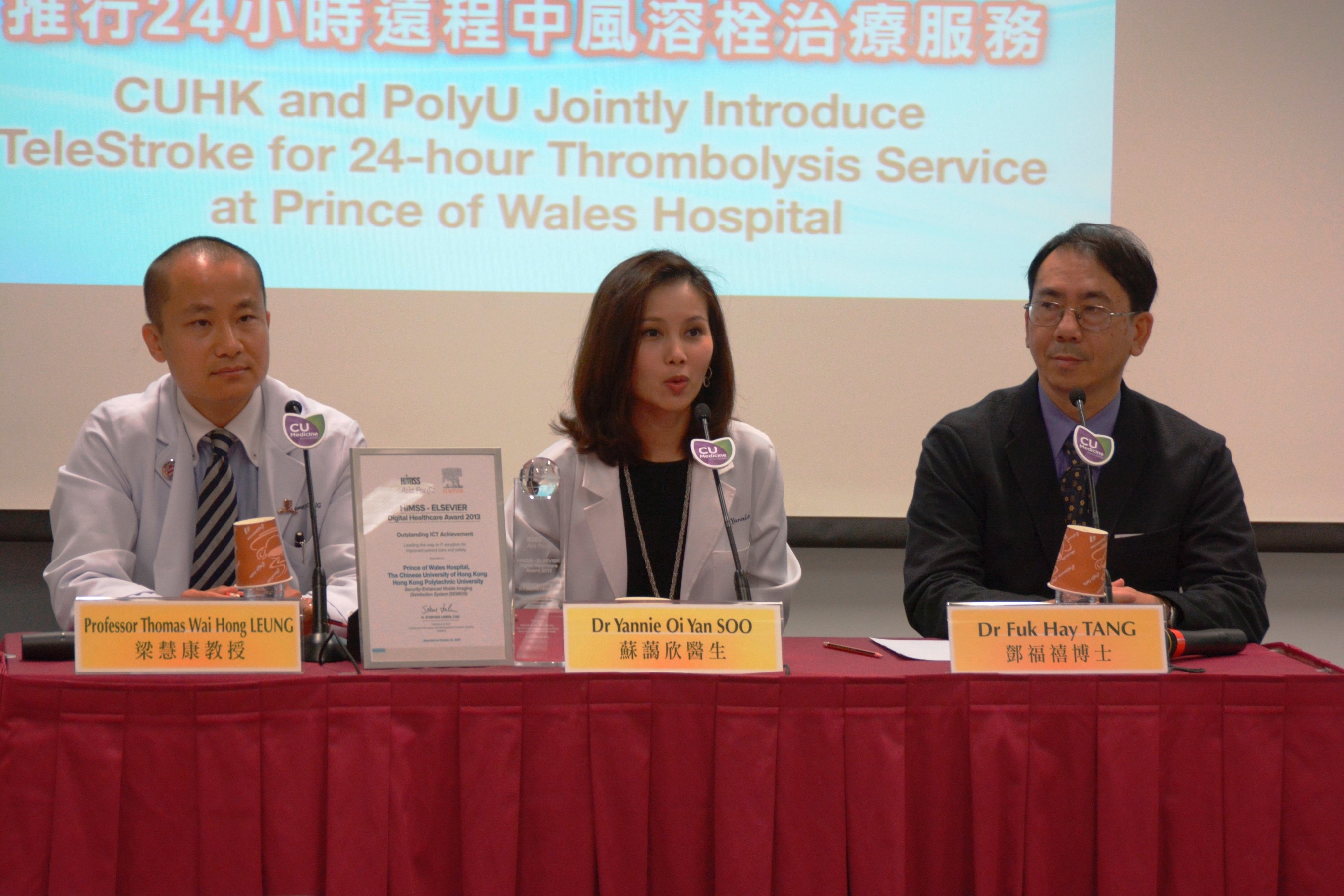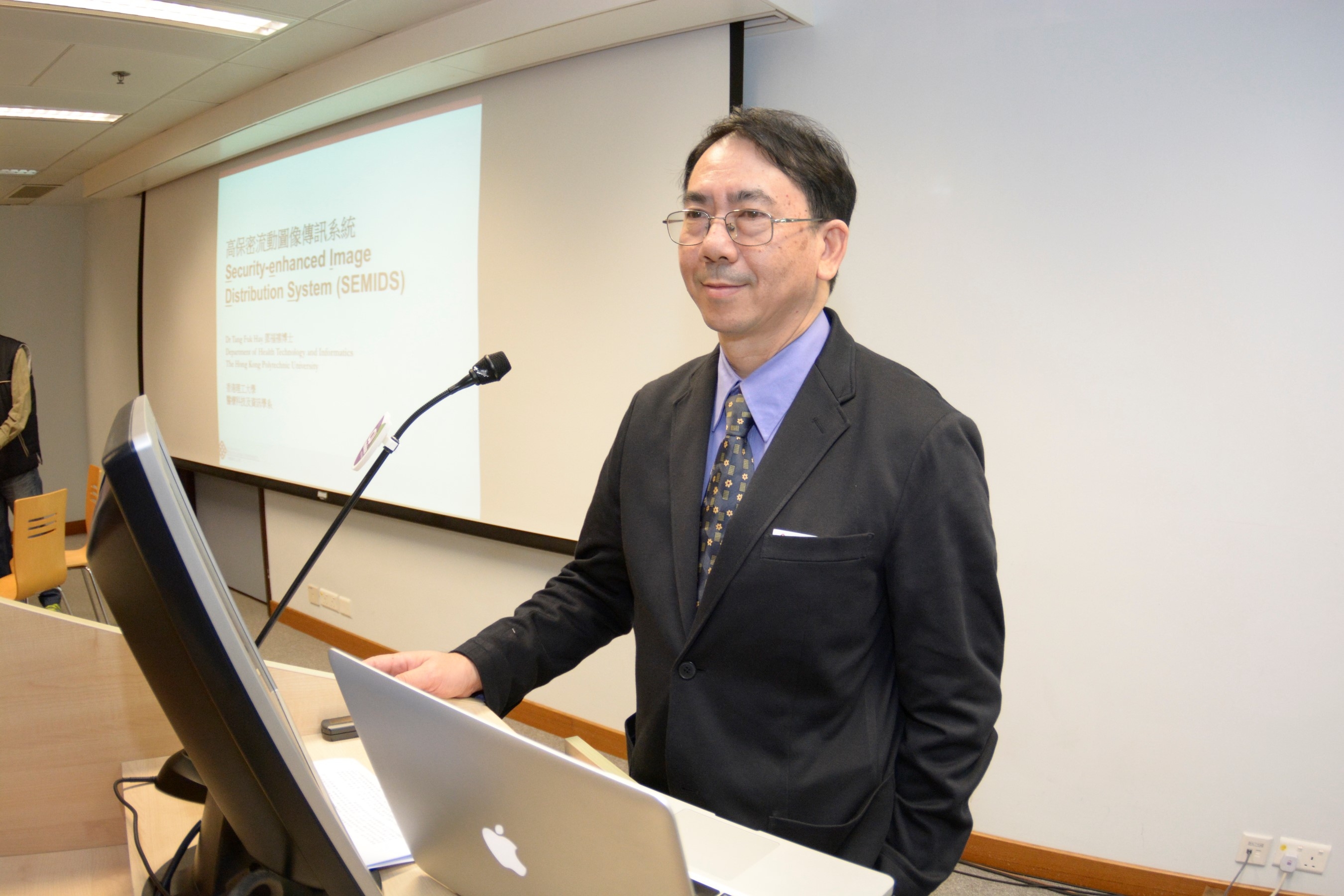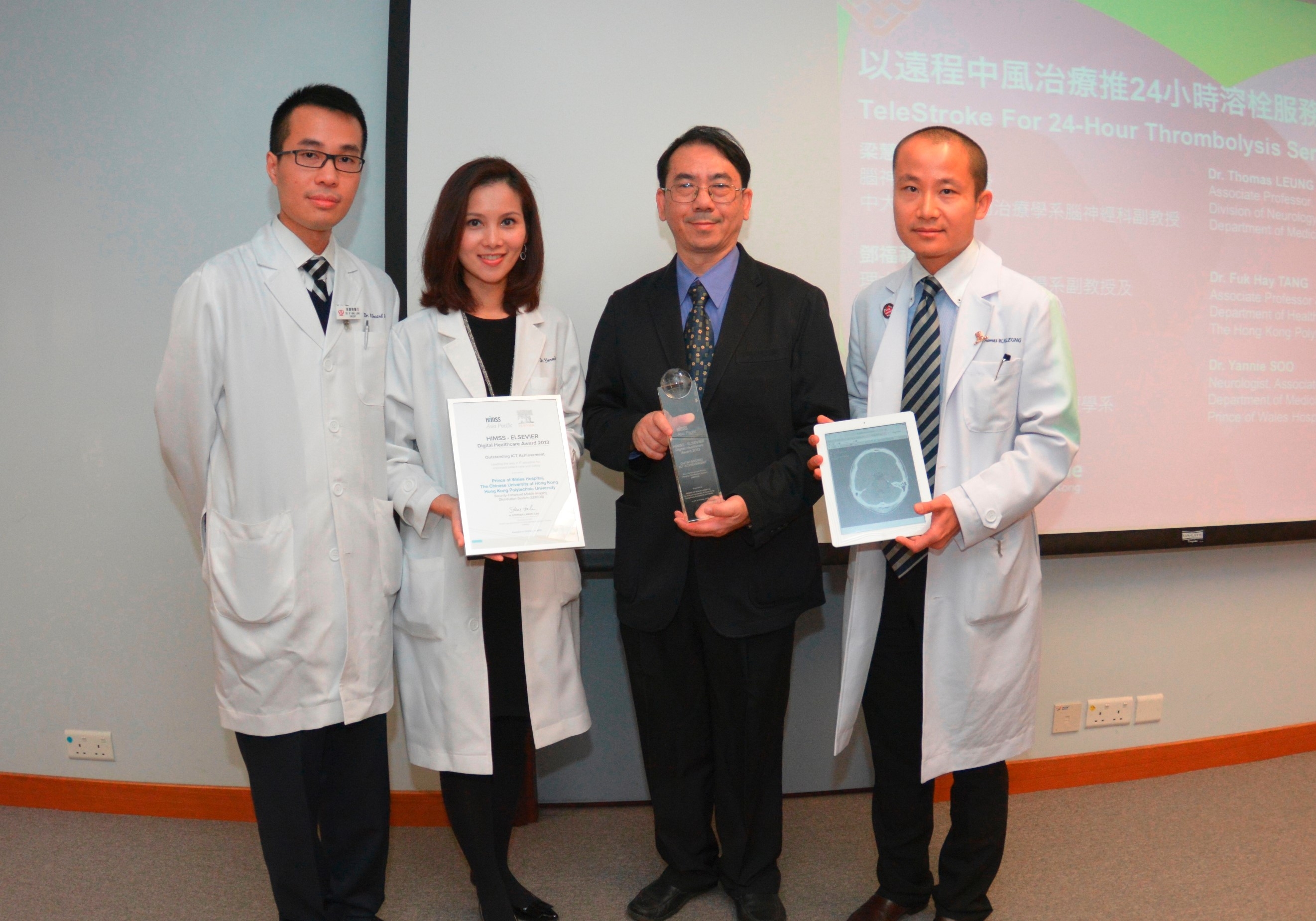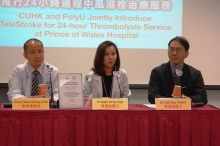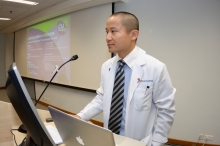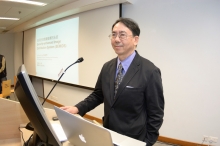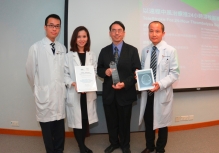CUHK
News Centre
CUHK and PolyU Jointly Introduce TeleStroke for 24-hour Thrombolysis Service at Prince of Wales Hospital
The Department of Medicine and Therapeutics at The Chinese University of Hong Kong (CUHK) and the Department of Health Technology and Informatics at the Hong Kong Polytechnic University (PolyU) have jointly introduced a unique telestroke system to facilitate neurologist’s distant assessment for thrombolysis during non-working hours. In May 2012, The Prince of Wales Hospital (PWH) launched a 24-hour thrombolysis service with this technology, since then, PWH has recorded a threefold increase in the number of stroke patients who received thrombolysis. The telestroke system was recognized by the HIMSS-Elsevier Digital Healthcare Award 2013.
Stroke is the number one killer disease in China causing over 1.5 million deaths every year. In Hong Kong, over 20,000 stroke patients per year are admitted to hospital for treatment. Among them, more than 3,000 died and tens of thousands of stroke survivors were disabled by the disease. Thrombolysis therapy given within three hours of stroke onset is the most effective treatment for stroke patients which can improve chance of neurological recovery by 30%. However, given that thrombolysis is a high-risk therapy, it can only be conducted with neurologist’s diagnosis and risk assessment. Restrained by the shortage of neurologists, thrombolysis is not available round the clock in most local hospitals.
The Department of Medicine and Therapeutics at CUHK and the Department of Health Technology and Informatics at PolyU have jointly introduced a unique telestroke system using the Security-Enhanced Mobile Image Distribution System (SEMIDS) developed by PolyU. With this ground-breaking technology, neurologists are able to conduct distant assessment for thrombolysis during non-working hours through mobile electronic devices (e.g. laptops and tablets) and a dedicated software.
The Prince of Wales Hospital is the first hospital in Hong Kong to adopt the telestroke system with SEMIDS and offer 24-hour thrombolysis service. Stroke patients admitting to the hospital will be diagnosed by off-site neurologists via the telestroke system to evaluate and determine the patients’ eligibility for thrombolytic therapy, when on-site neurologists are not available. Since its establishment in May 2012, 81 stroke paitents have been diagnosed through the telestroke system, 53 of them received thrombolysis therapy, three times more than the number before the system was introduced. Among the therapy recipients, 19 (35.8%) had almost full recovery after 3 months, while 7 (13.2%) had only mild residual disability.
Dr. Fuk Hay Tang, PolyU said, ‘The result indicated that the telestorke system offers similar treatment efficacy and saftey compared to on-site neurologists.’ Dr. Thomas Leung, CUHK said, ‘The telestorke system relieves the shortage of neurologists and grealty improves the health care service for stroke patients.’
(From left) Dr. Thomas Leung, Associate Professor, Division of Neurology, Department of Medicine and Therapeutics, CUHK; Dr. Yannie Soo, Neurologist, Associate Consultant, Department of Medicine and Therapeutics, Prince of Wales Hospital; and Dr. Fuk Hay Tang, Associate Professor & Associate Head, Department of Health Technology and Informatics, PolyU introduce the telestroke system.
Dr. Thomas Leung, CUHK states that the telestorke system relieves the shortage of neurologists and grealty improves the health care service for stroke patients.
Dr. Fuk Hay Tang, PolyU suggests that the telestorke system offers similar treatment efficacy and saftey compared to on-site neurologists.


